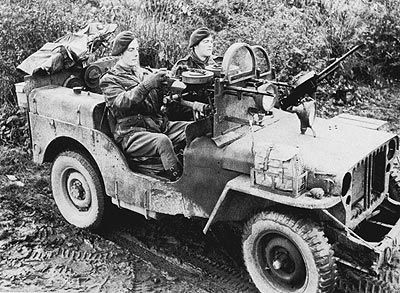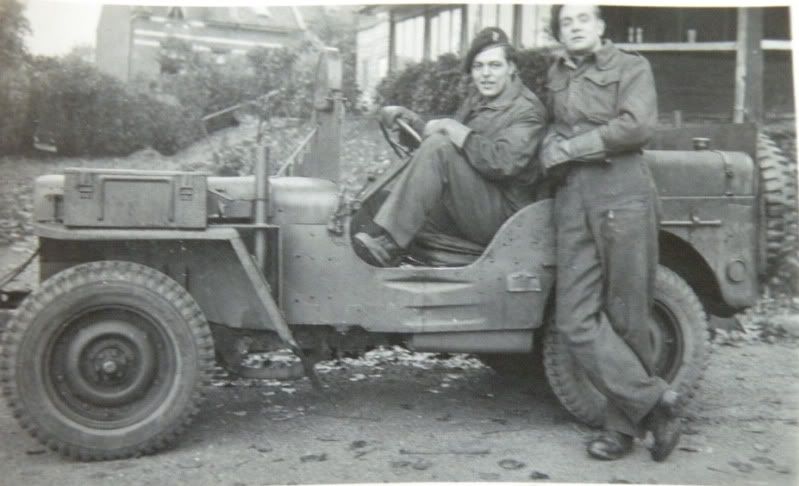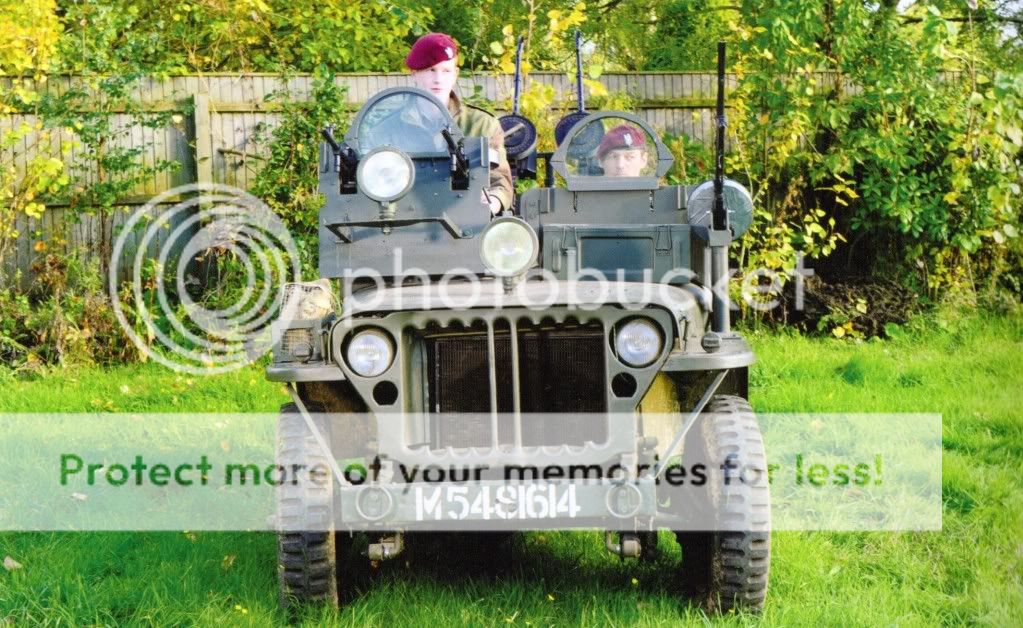Aca les dejo un link con algo de historia del SAS.
http://www.2parareunionclub.com/Faces_12.html
WHO REALLY FOUNDED THE SPECIAL AIR SERVICE?
By Gil Boyd BEM
PREFACE
Sometimes in life, things happen, that steer you down a road of interest and curiosity which uncover some interesting facts about real heroes, this is my story of two of them, Jock Lewes and Reg Seekings, and my personal view on who I truly believe was the founding father of the Special Air Service who brought in revolutionary training methods that in part are still used today.
It all started with a Police colleague of mine, Roger Lewis, moving back to Wales on retirement, and buying a house in the mountains previously owned by a sculptor.
In this sculptors garden was an unfinished statue of Jock LEWES, destined for a Military establishment somewhere that never came to fruition.
Roger desperately needed a chainsaw, so we did a swap, and I ended up with the statue of Jock Lewes in my garden.
Once there, and positioned in a key part of my garden, I started to find out a bit more about this man, who was at the very start of the Special Air Service which was formed in 1941, and soon learnt he played a bigger part than had been previously thought in its inception.
Words like Co-Founder have been used in books and periodicals, about Jock Lewes’, but his name is one that is not as well known as Stirling’s.
I believe, because he was killed so early on during the war, and the formation of the Special Air Service, that the true recognition was never given to this man, who at least deserved to be recognised as the steering light.
After all it was he that asked Stirling, his friend to join him in the special units formation.
USE OF SPECIAL FORCES
In 1941 General Auchinleck was the Commander in Chief in the Western Desert. He found it very hard to match his military skills against Rommel and used Commandos and the Long Range Desert Group to be the thorn in the side of the Germans advance operating behind enemy lines. It was clear that although the LRDG were very successful in their covert endeavours to strike deep into enemy territory, they were often used as a taxi service for the Commandos, and latterly the SAS.
During July 1941, Lt Jock Lewes, who was attached to No 8 Commando based in Alexandria, intercepted a consignment of parachutes destined for the 2nd Parachute Brigade in India. With these parachutes he decided a better way to covertly attack the enemy. They would parachute into their operations, but needed to establish what the chutes could do for them. He set about doing experimental work with these chutes to see if they could carry extra weight and deploy at a lower height safely.
STIRLING JOINS LEWES COMMANDO’S
It was about this time that David Stirling, an ex Scots Guards Officer, joined this group after speaking to Jock Lewes, and whilst jumping with them from an old Valencia bomber, seriously injured his spine, and became paralysed for a short time. He was placed in a Military Hospital in Alexandria to recover. Whilst there, recovering, he decided to take Jock Lewes advice in formulating a detailed report whilst he had the time, to highlight the fact that large formations of "Commandos" doing these covert Clandestine operations in the desert would not work. Lewes suggested to Stirling, that many of the highly trained operators in No 8 Commando should be brought under one banner, and utilise their skills in smaller more agile four man teams and formations. His report went to the Deputy Commander, General Ritchie, who in turn sold the concept to General Auchinleck to assist in a new offensive planned against Rommel. Many Commando units were disbanded following this reports approval, and they were to join what Brigadier Dudley Clarke named L Detachment, Special Air Service Brigade. Unwittingly, he also named another "ghost" formation 1 SAS to make the Germans think there were more units than there actually were.
SELECTING THE LEADERS
In August 1941 Stirling was authorised by the C - in - C to recruit the best officers and men from Commando units which he did successfully.
David Stirling summoned around him officers he could trust, and those he knew well from his days at Cambridge University and Oxford. These officers were brave men in their own right, such names as Paddy Mayne, Fraser, Bonnington, Thomas and McGonigal. Jock Lewes, an ex Welsh Guards Officer, had less than two years experience as a soldier, but was clearly the brains behind this new legendary fighting force. He was a driven man and was never afraid to express his views, and I hope I make clear in this short story of his life in the Regiment his vital contribution to its success and what it has achieved
THE FORMATION OF THE SAS
At the end of August 1941 in a small village called Kabrit, a 100 miles from Cairo, the Special Air Service as we know it today was truly formed.
The formation was handpicked. Lewes, together with his hard tough officers, set about training each man they had selected from the Commando units in stripping and assembling enemy weapons, explosives techniques and navigational expertise. Some of the formation was also allowed to carry German weapons, which at the time were more practical and effective in the desert conditions.
PARACHUTE DEATHS DUE TO EQUIPMENT FAILURE
Parachute training started soon afterwards, and it was whilst the formation were jumping from an old RAF Bristol Bombay aircraft on the 17th of October 1941, that the first two jumpers plunged to their deaths due to the weak static line clips used to connect their parachutes, which failed to pull the chutes from their bags. The clips were strengthened and to show the force that he had total faith in them, Jock Lewes as the training officer, not Stirling as many books have shown as that jumper, elected to jump first to restore the damage already done to his men’s confidence and morale. This fact was corroborated by Pat Riley one of the "original" members of the SAS, as it was he who was number two after Lewes out of the aircraft door.
JOCK LEWES INVENTS THE "STICKY BOMB"
Jock Lewes in the meantime, was perfecting an idea he had for blowing up enemy aircraft on the ground. It was a special combination of Thermite and plastic explosive, which was then mixed together to become known as a Sticky Bomb. Once attached, they would be very hard to remove quickly. No one had come up with this idea before so he was left alone to perfect its construction.
PARACHUTE DISASTER
The C-in-C had planned to carry out his offensive on the 16th of November 1941, so it was imperative that the formation were ready and fully trained by that date. The aim of the force was to parachute into Gazala airfield and destroy the German aircraft on the ground, which would have caused massive damage to the allies if they had been able to take off during the British offensive. Sadly the force took off in some of the worst desert storms for years, turning the operation into a disaster. Out of the 66 men that took off, only 21 returned that night, one of whom was Reg Seekings, who I will talk about later. High winds and blinding sand storms meant that many of the men were lost in the desert or captured or killed by the Germans.
ASSISTANCE FROM THE LONG RANGE DESERT GROUP
Following this failed parachute operation, Stirling decided to use the LRDG to ferry his men into battle in future using their proven vehicles and experience. This he did on their first successful raid on Tamet, a German airfield where they destroyed 24 German aircraft on the ground and 20 petrol tankers and other vehicles, as well as food dumps. Another raid on Benina airfield showed the effectiveness of using smaller three man teams for the first time.
Stirling, Corporal Seekings, and Corporal Cooper, entered a German airfield and sat in the middle of the runway until the RAF diversionary attack went in. Whilst the diversionary attack was being carried out, they entered hangars and placed time delay bombs in all the parked aircraft, leaving swiftly to watch the whole airfield erupt in a ball of flames. Over the next few months these small bands of SAS men destroyed over 320 aircraft.
ALL SAS MEN CAUGHT TO BE TORTURED AND EXECUTED
The units success angered Hitler so much, that he said that all SAS men caught in future would be interrogated, tortured and executed out of hand.
As a direct result of these successes, the small raiding parties became mobile for the first time using the vehicles of the LRDG who were formed in June 1940 with their modified Chevrolet and Ford trucks bristling with a variation of machine guns. The favoured machinegun on the variations of vehicles that were used by the SAS in those early days were the Vickers K Drum fed .303, due primarily to its rapid rate of fire using two separate barrels side by side, usually fitted to aircraft, and the other gun was invariably the .50 Cal Browning machine gun.
SAS MERGE WITH THE LRDG
General Ritchie took over the Eighth Army Group and sent L Detachment to Jalo Oasis to share the location with the Long Range Desert Group. Soon after this merger many successes followed.
In December of 1941, SAS units attacked enemy airfields at Sirte, Agheila and Agedabia knocking out more than sixty enemy aircraft using the Lewes Bombs for the first time devised by Jock Lewes.
FRIENDS SEPARATE ON RAIDS
Stirling and Paddy Mayne went to Tamet on the 31st of December 1941 whilst Jock Lewes and his raiding party attacked a target in Nofilia at the same time.
This is where the famous legendary tale of Paddy Mayne entering the German pilots mess alone with his Thompson machinegun fitted with a drum magazine killed all inside.
He was clearly fired up on that raid, and as one aircraft was left standing and they were out of explosives, Paddy Mayne ripped out the instrument panel and console with his bare hands to render it useless!!
DEATH OF JOCK LEWES
Sadly on the way back from the Nofilia raid Jock Lewes was killed by a German Messerschmitt 110 plane strafing their column.
Things changed in the unit when Jock was killed, and morale was affected drastically as his loss was felt by all members of the Regiment in those early days.
Stirling was shocked to learn of his close friend’s death. A friend he had had, from those days in Cambridge before the war. Jock Lewes unlike Stirling, was an Oxford Graduate, with the traditional light and dark blue as their respective University colours.
These colours they proudly wore within the University rowing teams they both rowed for and often against one another, were to prove invaluable in the construction of the Regiments winged dagger badge
THE WINGED DAGGER
These two colours were to form the basis of the SAS winged dagger with the words WHO DARES WINS underneath. Initially the sword that is on the cap badge today was the sword of Excalibur surrounded with fire, but this was changed towards the end of the war to a winged dagger. All the original cloth cap badges issued to his men were handmade in a tailor shop in Cairo which Stirling had found. He initially issued white berets to his formation, but soon found on many occasions, other troops took the rise out of them, this caused many a fight in the bars of Cairo. Soon afterwards Stirling changed the berets to maroon and later to the sand colour which remains with the Regiment today.
THE SAS WINGS
The SAS wings were worn on the right upper arm by many of the soldiers, whilst others including the officers wore theirs on their left breast pocket above their medal ribbons. This was changed by Stirling and Lewes, so that the enemy could not identify officers from the men, and thereafter all ranks wore their wings on their right upper arm for continuity and uniformity with the newly founded Parachute Regiment who also standardised the wearing of wings this way.
CHURCHILL SENDS HIS SON
A fact not commonly known, was that Winston Churchill sent his son Randolph to accompany Stirling on several raids in the desert campaign, so that he could see firsthand the success the unit had achieved in such a short time, but the motive was, I believe, to assess for his father the Prime Minister, whether the formation should survive or be disbanded and report back. He was clearly impressed with what he saw and as a result the unit went from strength to strength thereafter.
STIRLING PROMOTED
In January 1942, David Stirling was promoted to Major, at which time he expanded his unit to include Free French Paras and the Special Boat Section of No 8 Commando. This gave Stirling more flexibility and the ability to achieve maritime operations against the Germans as well. L Detachment was formerly renamed The 1st Special Air Service a Regiment in its own right with an establishment as listed below.
The whole Regiment was made up of: 500 Officers and men of all ranks 1st SAS
100 men of all ranks French SAS Sqn
115 men of all ranks Greek Sacred Sqn
55 men of all ranks Special Boat Section
2 SAS
David Stirling’s younger brother William went onto form 2 SAS, after leaving the American 1st Army Group in which he served.
MAJOR STIRLING CAPTURED
In January 1943 Stirling was captured in a village called Gabes, in Tunisia by a German unit setup to counter the work of the SAS which had annoyed Hitler so much over previous years.
He was sent to Colditz Castle following many attempts to escape in other camps. Rommel decided to defy Hitler’s command for his execution as he was an honourable man and a brilliant General, and decided not to execute any of the Special Air Service as it was against his principles as a soldier.
DEATH OF DAVID STIRLING
Colonel David Stirling went on to have a long life after the war and sadly died in 1990, the same year that he was bestowed with a Knighthood by Her Majesty the Queen for his services to the Special Air Service. It is ironic also, that no member of the Special Air Service has ever been awarded the Victoria Cross!!
I am proud to have Jock Lewes statue in my garden, and I am also pleased that I have perhaps rescued it from certain destruction from the council tip. It has opened so many doors that would eventually lead to one story, and about one unit, that we owe so much to.














